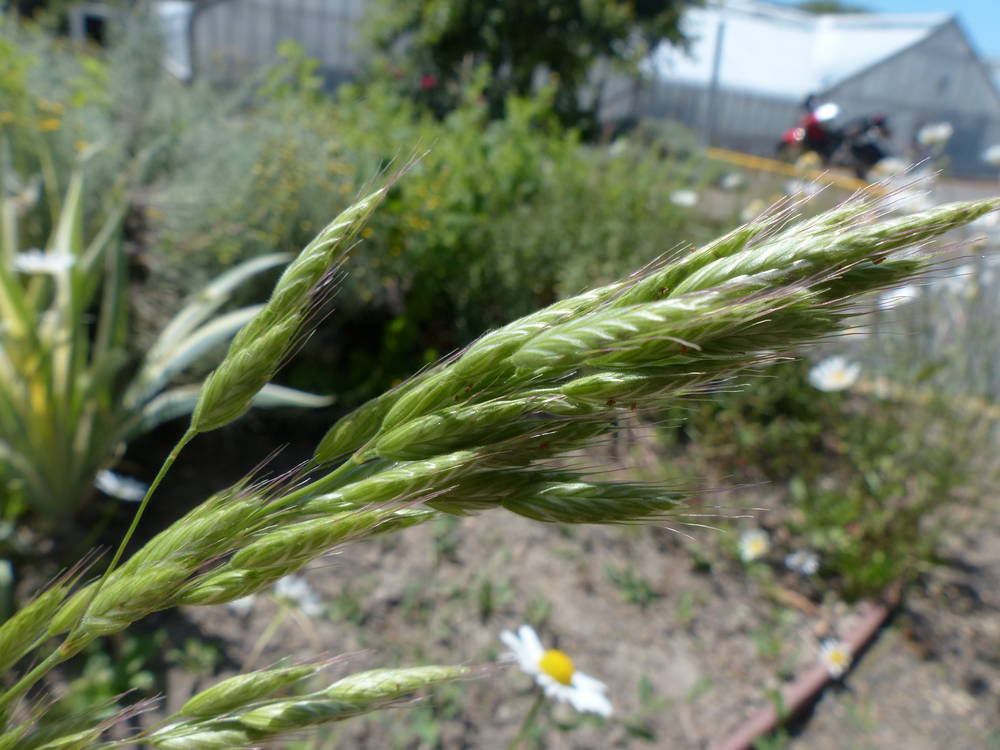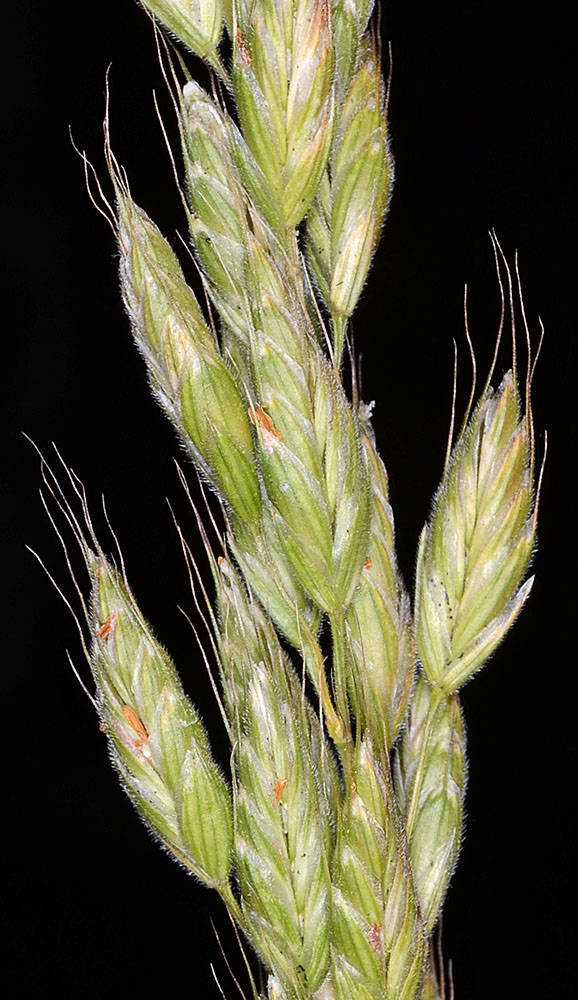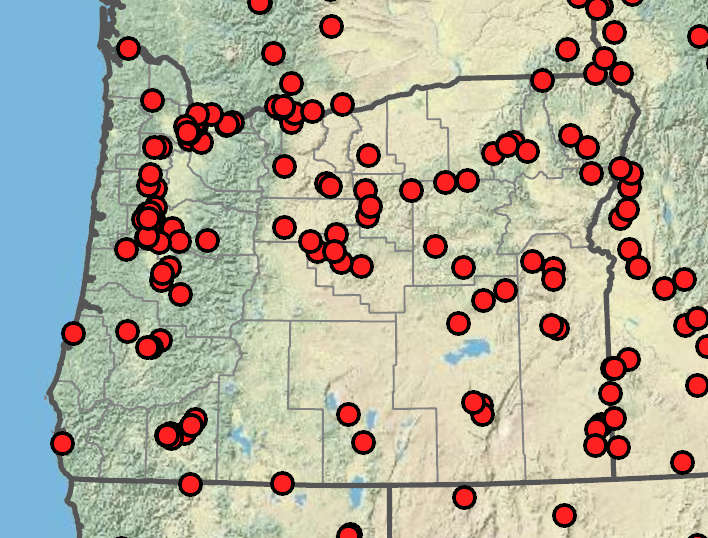Bromus hordeaceus
Bromus commutatus
soft chess
hairy chess, meadow brome
lower sheaths densely pilose; upper sheaths pubescent or glabrous;
blades 2–19 cm × 1–4 mm;
lower surfaces glabrous or pubescent;
upper surfaces pubescent.
lower sheaths densely hairy with stiff, often retrorse hairs; upper sheaths pubescent or glabrous;
blades 9–13 cm × 2–4(9)mm, pilose on both surfaces.
1–13 × 1–4 cm; erect, usually ovoid; open at anthesis, becoming contracted and dense, occasionally reduced to 1 or 2 spikelets;
branches usually shorter than the spikelets, ascending to erect; straight or nearly straight.
7–16 × 3–6 cm; open; erect to ascending; some branches longer than the spikelets; slender, ascending to spreading.
(11)14–20(23)mm, lanceolate; terete to moderately laterally compressed, 5–10 florets;
floret bases usually concealed at maturity;
rachilla internodes concealed at maturity.
14– 18(30) mm, oblong-lanceolate; terete to moderately laterally compressed, not purple-tinged, 4–9(13) florets;
floret bases usually concealed at maturity;
rachilla internodes 1.5–2 mm, usually concealed at maturity.
pilose to glabrous;
lower glumes 5–7 mm, 3–5-veined;
upper glumes 6.5–8 mm, 5–7-veined.
glabrous, occasionally scabrous or pubescent;
lower glumes 5–7 mm, 5-veined;
upper glumes 6–9 mm, 7(9)-veined.
equal to or shorter than paleas; thin, weakly inrolled to flat.
equal to or shorter than paleas, weakly to strongly inrolled.
6.5–11 × 3–5 mm, lanceolate, chartaceous, antrorsely pilose to pubescent, occasionally glabrous near the base or throughout, 7–9-veined; hyaline margins abruptly or bluntly angled, not inrolled at maturity;
lateral veins prominent, thickened and raised;
tips rounded to acute; bifid;
teeth shorter than 1 mm;
lemma awns 6–8 mm, usually arising less than 1.5 mm below the lemma tips; straight to recurved at maturity.
8–11.5 × 1.7–2.6 mm, elliptic to lanceolate; leathery; backs usually glabrous, rounded over the back, distinctly 7(9)-veined;
veins not raised and thickened;
margins scabrous or pubescent, bluntly angled, inrolled or not at maturity;
tips acute to obtuse; bifid;
teeth shorter than 1 mm;
tips awned;
lemma awns 3–10 mm; straight, arising less than 1.5 mm below the lemma tips, awn of the lowest lemma shorter than the others.
0.6–1.5(2)mm.
0.7–2(3)mm.
1–2 mm shorter than lemmas.
=28.
=14, 28, 56.
Bromus hordeaceus
Bromus commutatus
Disturbed areas, degraded grasslands. 0–1900m. All ecoregions except BR. CA, ID, NV, WA; north to AK, south to Mexico, east to Newfoundland and SC; North Africa, southern Europe; scattered elsewhere worldwide. Exotic.
Bromus hordeaceus has been divided into subspecies, two of which may occur in Oregon (B. h. ssp. hordeaceus and B. h. ssp. pseudothominei). Most Oregon specimens, however, cannot be identified confidently to either subspecies.
Dry, disturbed areas. 0–1900m. All ecoregions except Est. CA, ID, NV, WA; north to Yukon, east to Newfoundland and GA; Europe and the Baltic region. Exotic.
Bromus commutatus is a common, weedy, annual brome. It is similar to B. racemosus, which has shorter lemmas and longer anthers. It is often confused with B. secalinus, which has paleas subequal to the lemmas and shorter lemmas.
Barbara Wilson, Richard Brainerd, Nick Otting
Barbara Wilson, Richard Brainerd, Nick Otting
- Local floras:
BC,
CA,
OR,
WA
- Local Web sites:
CalFlora,
CalPhotos,
Flora NW,
PNW Herbaria
WildflowerSearch
iNaturalist (observations)
USDA Plants Database
- LBJ Wildflower Center
- SEINet
- Plants of the World Online
- Encyclopedia of Life
- Wikipedia
- Google Image Search
- Local floras:
BC,
CA,
OR,
WA
- Local Web sites:
CalFlora,
CalPhotos,
Flora NW,
PNW Herbaria
WildflowerSearch
iNaturalist (observations)
USDA Plants Database
- LBJ Wildflower Center
- SEINet
- Plants of the World Online
- Encyclopedia of Life
- Wikipedia
- Google Image Search





